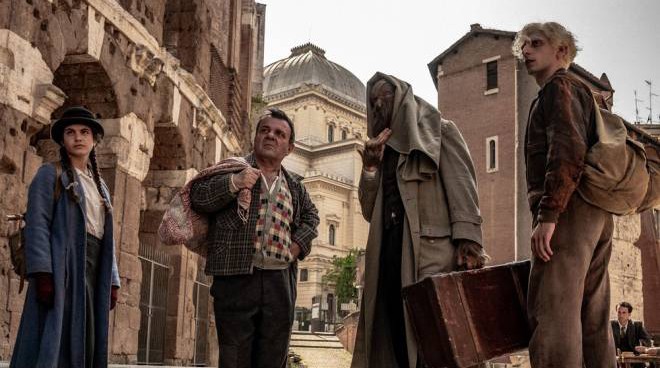NO TIME TO DIE
Immediately after viewing, the conclusion of the Daniel Craig Bond saga, much as was its beginning, feels bitter but fitting, not to mention very entertaining, but nonetheless not without flaws. It is with some delay that comes the realisation that it’s a great Bond film, and although imperfect, a rightful conclusion to one interconnected saga.
 |
The spy thriller genre is perhaps one of the most difficult ones to maintain fresh and original, and even more so in the case of James Bond films. Craig’s Bond benefits from the interconnection between installments, which allows the construction of a single narrative. It is difficult to follow the storyline of No Time to Die without awareness of the events of Casino Royale, Quantum of Solace, Skyfall and Spectre. Skyfall may be the only exception of a Craig-Bond film that is both fitting in the general storyline and autonomously efficient.
Even harder a challenge is to conclude a saga of spy films. The only precedent case of a spy thriller series that had a conclusion is the Bourne trilogy, but its storyline hardly compares to the more traditional Bond. In other words, No Time to Die had the difficult and semi-unprecedented task of concluding a spy saga in a satisfying way.
For this purpose, Bond being a classic character, a return to a very traditional scheme was chosen for the third act. Several of the more common tropes of James Bond films reappear, including Cold War-like fears, secret island bases, etc. as a result, the finale becomes predictable, filled with clichés. It would have been paradoxically more daring to choose a different direction, a definitive ending but in a less permanent way. The conclusion chosen for the film is not by any means out of place, it is satisfying to a degree, but not something that has not been seen before. An evenience hints at the possibility that an even more tragic and daring conclusion could have been conceived (by implementing the consequences of the villain’s “assurance” – it cannot be explained more clearly without spoilers), which only adds to the bitterness of the film’s ending.
Another underwhelming element is the villain. Too simple a backstory is provided, too nebulous are his motives. It seems that the production intended to shape a villain with an aura of mystery that ultimately does not appeal enough, not in the way Blofeld or Silva did, or that Lyutsifer Safin’s character intended to mimic the more classic Bond villains. Sadly he relies on Macguffins rather than an elaborate plan to defeat or attempt to defeat the protagonist. It would have been much more impressive to witness a clever villain that outsmarts the protagonist, but in the end Rami Malek’s villain is a simple madman with access to resources. Malek’s performance does what it can to save the character, but a character cannot rely only on the actor’s talent in order to work.
If the last thirty minutes do not bring anything new to the table, the first two hours make for the most entertaining Bond since Skyfall. Here, mystery is an advantage, and makes even the most typical action sequence more enjoyable. The best film to draw a comparison with is Mission Impossible: Fallout, which similarly does not invent new espionage tropes, but reuses successfully the common modes of espionage cinema without feeling unoriginal. No Time to Die is also incredibly timely, in replacing the traditional fear of nuclear war with a much more contemporary, real threat.
On top of that, Linus Sandgren’s neon-lit and excellently coloured photography makes for this to be one of the most gorgeous Bond films. No Time to Die stands out in its visuals, and its beauty is matched only by Roger Deakins’ work on Skyfall.
Overall, No Time to Die deserves its place among the better films of the Daniel Craig Bond saga: Casino Royale and Skyfall. Once digested the bitter outcome, and accepted the flaws, it makes for a solid Bond entry. Perhaps not the most original conclusion, but a modern classic Bond film that attempts to conclude a series that has never before had an actual storyline.


Comments
Post a Comment